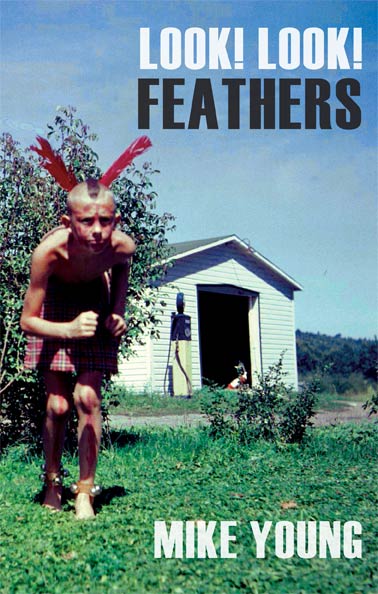
|
Before I get to the stories themselves, the emotional plumbing and the manic architecture and the Machine Stops-ish isolation of the characters in these twelve stories in Mike Young’s debut collection, Look! Look! Feathers, I have to mention the real star of this book, which is Young’s lingo-fused, brain-twisting, Barry-Hannah-meets-fast-food-nation voice. Above all else, Young’s voice is real, it’s original, and it’s damn near unstoppable. Young’s voice is like the debasingly articulate Jiminy Cricket I seem to hear whispering at me on my shoulder every time I open Firefox or pull up to a Taco Bell drive-thru window or simply walk around in the haze of a world that’s mine but that I don’t understand—an ontological cocktail that’s one part disembodied techno-juice, one part actual, physical, real, beautiful, natural living. Paul Gauguin asked, at the turn of the twentieth century, “Where do we come from? What are we? Where are we going?” Mike Young seems to be asking the questions more relevant to me in the now, which are, “Where am I? How did I get here? Why do I feel so weird?” What I’m saying is that Mike Young’s voice is one of the only voices I’ve read in contemporary short fiction that actually manages to reflect modern thought in an artful and honest way. It is a voice informed by jokes about testicles, the war in Iraq, commercials for PCs versus Macs, internet chat windows, and Nintendo, and this voice tells emotionally true stories about a couple finding a thumb-sized baby in a medicine cabinet, or a kid growing up in a gay-version-of-Robert-Evans-style swinger’s mansion, or a reality show taking over and featuring an entire town, or simply an aging widower who recently lost his second wife. Let’s talk about hybridity. Let’s talk about how Mike Young infuses modern symbols and beacons (e.g. the Oakland Raiders, Safeway, Google) into the language of the bloodily heartbroken rants and ravings of a character from Hannah’s Airships in order to tell stories about characters that are sometimes grotesque schemers ala Flannery O’Connor and are at other times down-on-their-luck blue-collar American proletariats ala Raymond Carver. --Michael Goroff Michael Goroff is a small press fiction staff reviewer for Barn Owl Review. He lives with his cat in Akron, Ohio, where he is currently pursuing an MFA in Fiction through the Northeast Ohio Master of Fine Arts program. Also by Michael Goroff: Review of How They Were Found by Matt Bell and Review of Us by Michael Kimball
|
